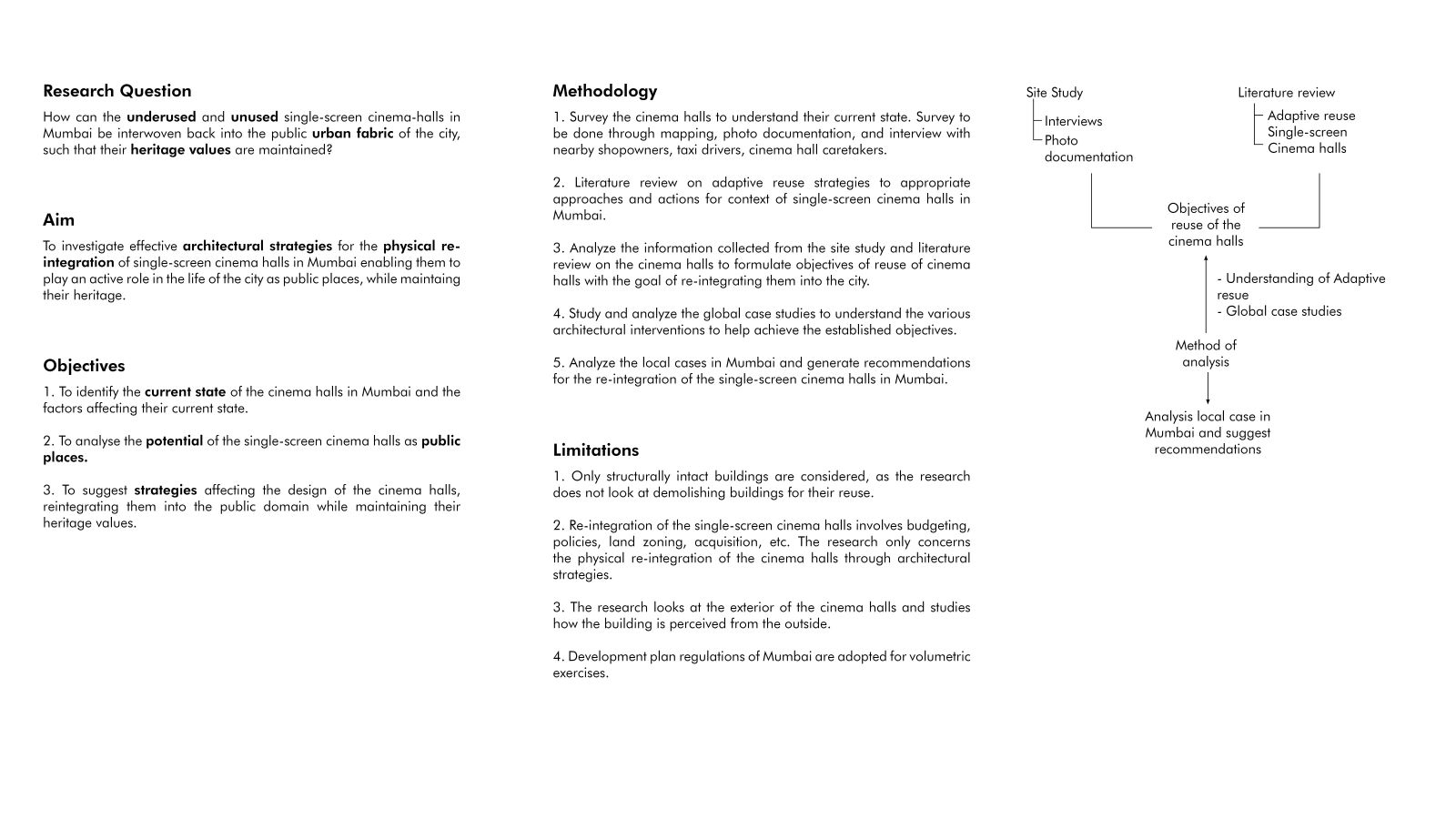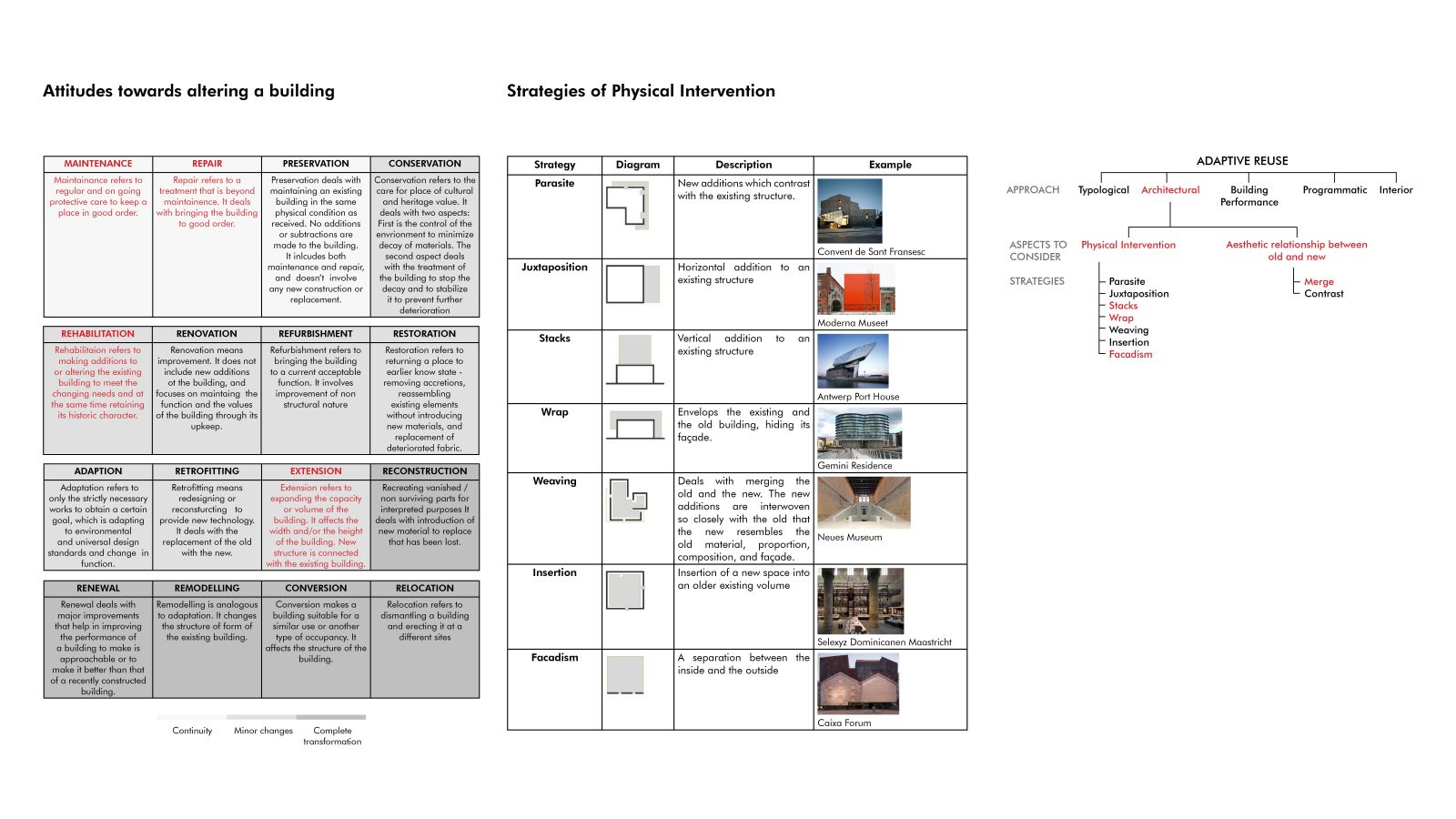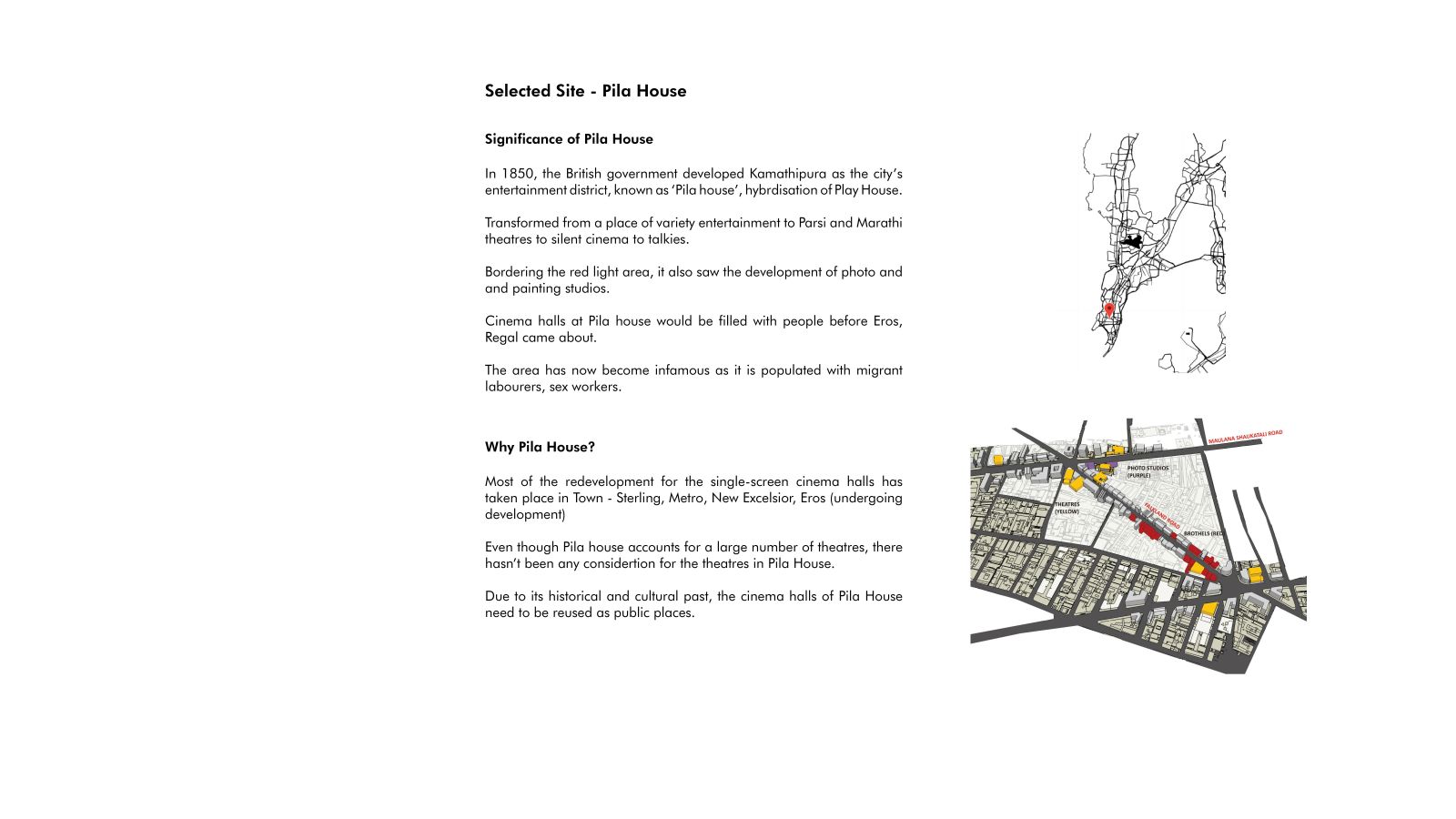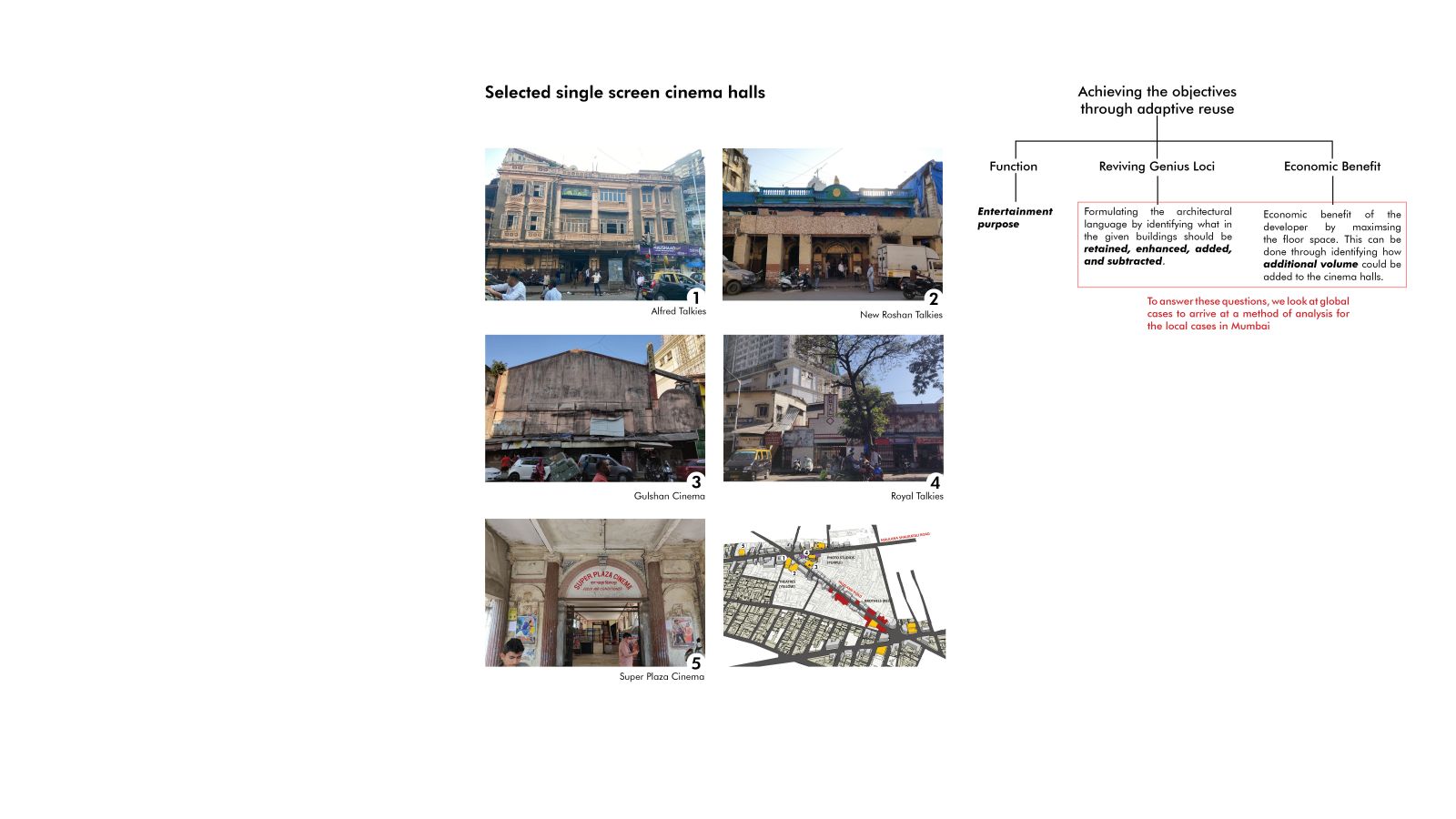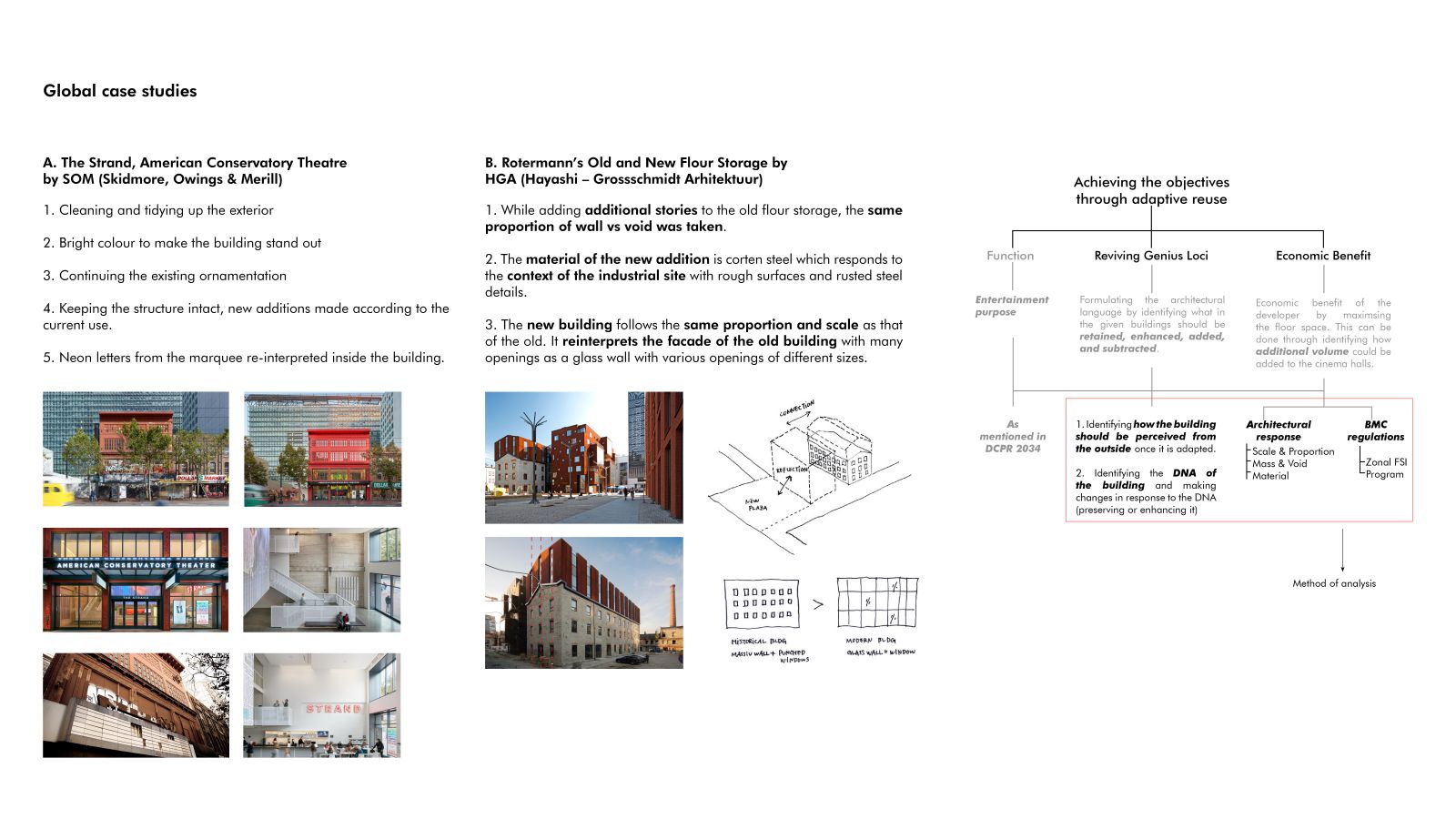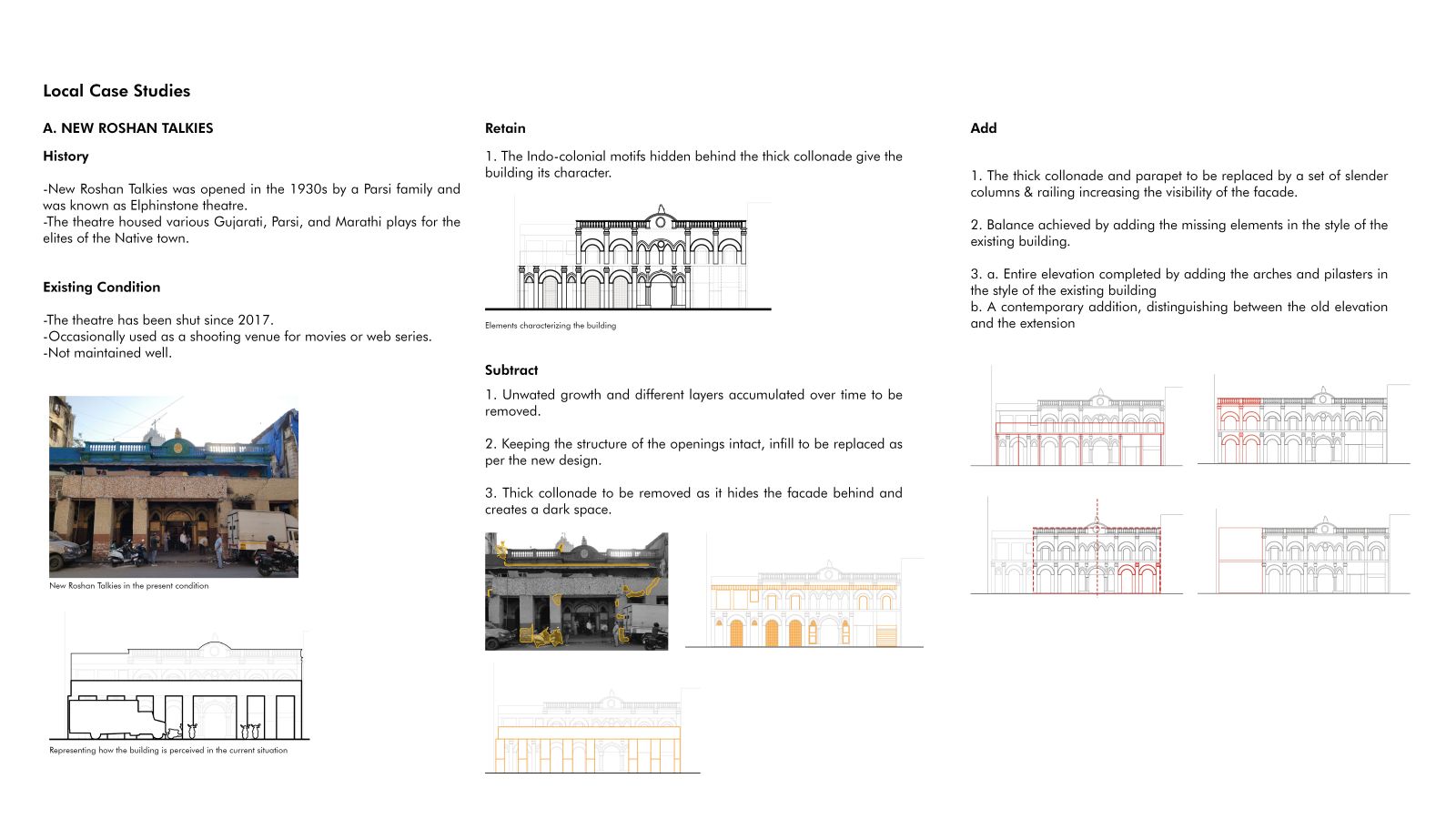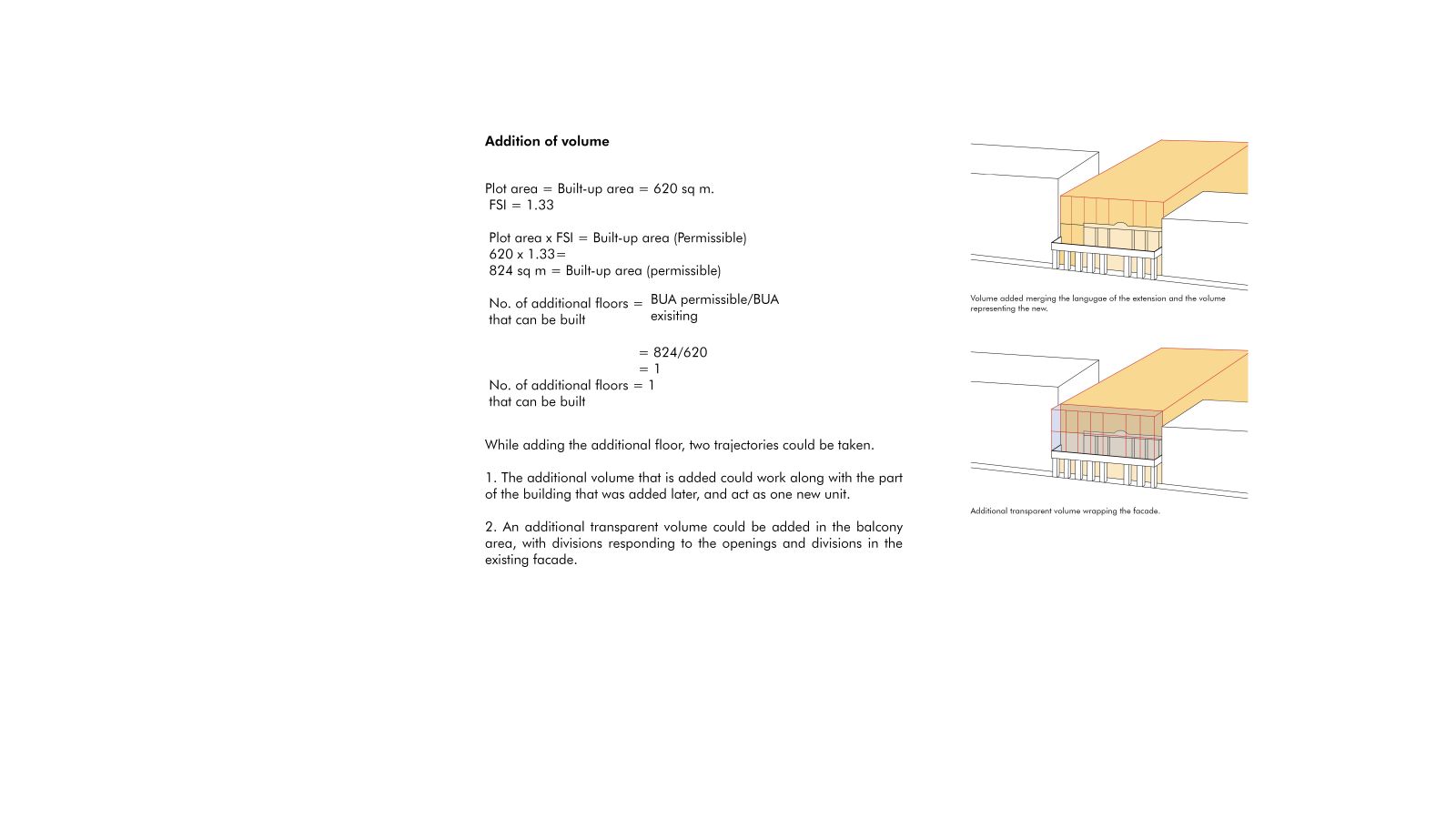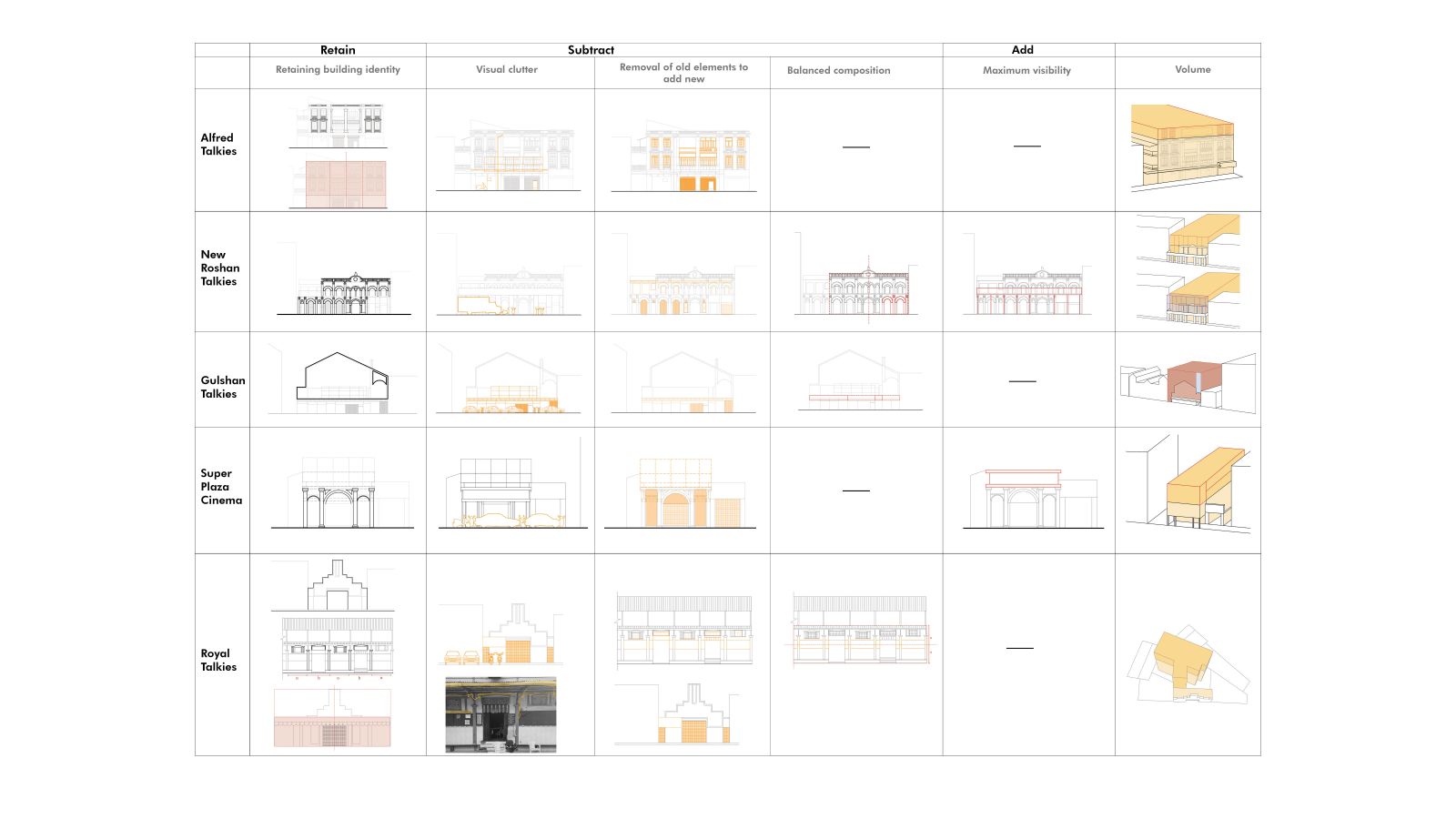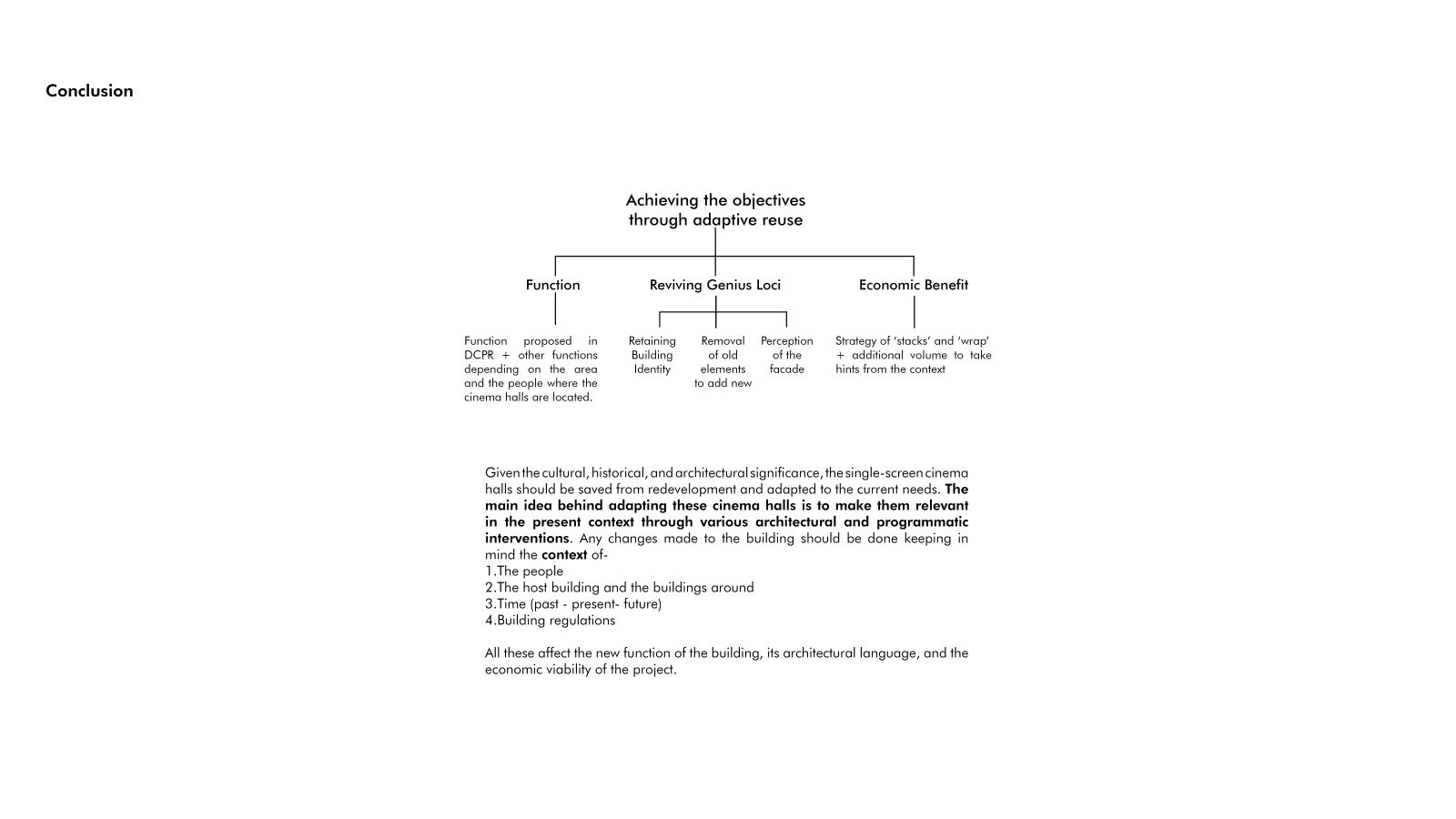Your browser is out-of-date!
For a richer surfing experience on our website, please update your browser. Update my browser now!
For a richer surfing experience on our website, please update your browser. Update my browser now!
Cinema is deeply engraved in the life of Bombay and cannot be separated from it. By the 1930s, the single-screen cinema halls became a vital part of the development of Mumbai. However, these culturally, historically, and architecturally significant structures are now on the verge of dying as many of them lie unused, underused, or defunct. This research aims to investigate strategies for the physical reintegration of the cinema halls into the city’s urban fabric while maintaining their cultural heritage. The reintegration of the cinema halls involves various factors like budgeting, land acquisition, government policies, stakeholders, etc. The research is limited to the physical reintegration of the cinema halls, investigating design strategies on how to intervene within or upon an existing building. Three factors – new function, genius loci, and economic benefit of the developers- are identified as drivers of decision-making for adaptive reuse of the cinema halls. The study indicates that responding to the context – people, the host building and the buildings around, time, and building regulations is essential for the reintegration of the cinema halls into the urban realm.
